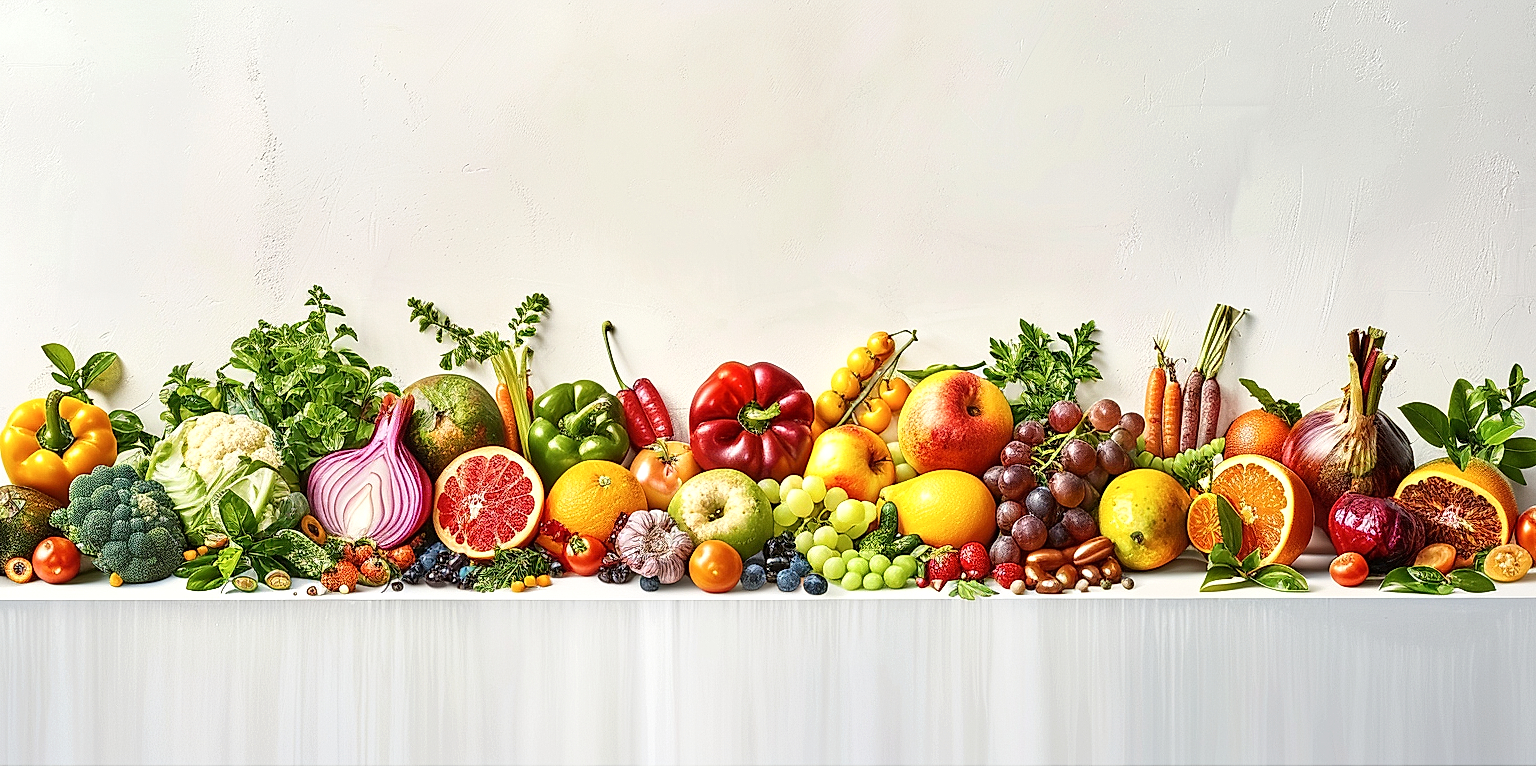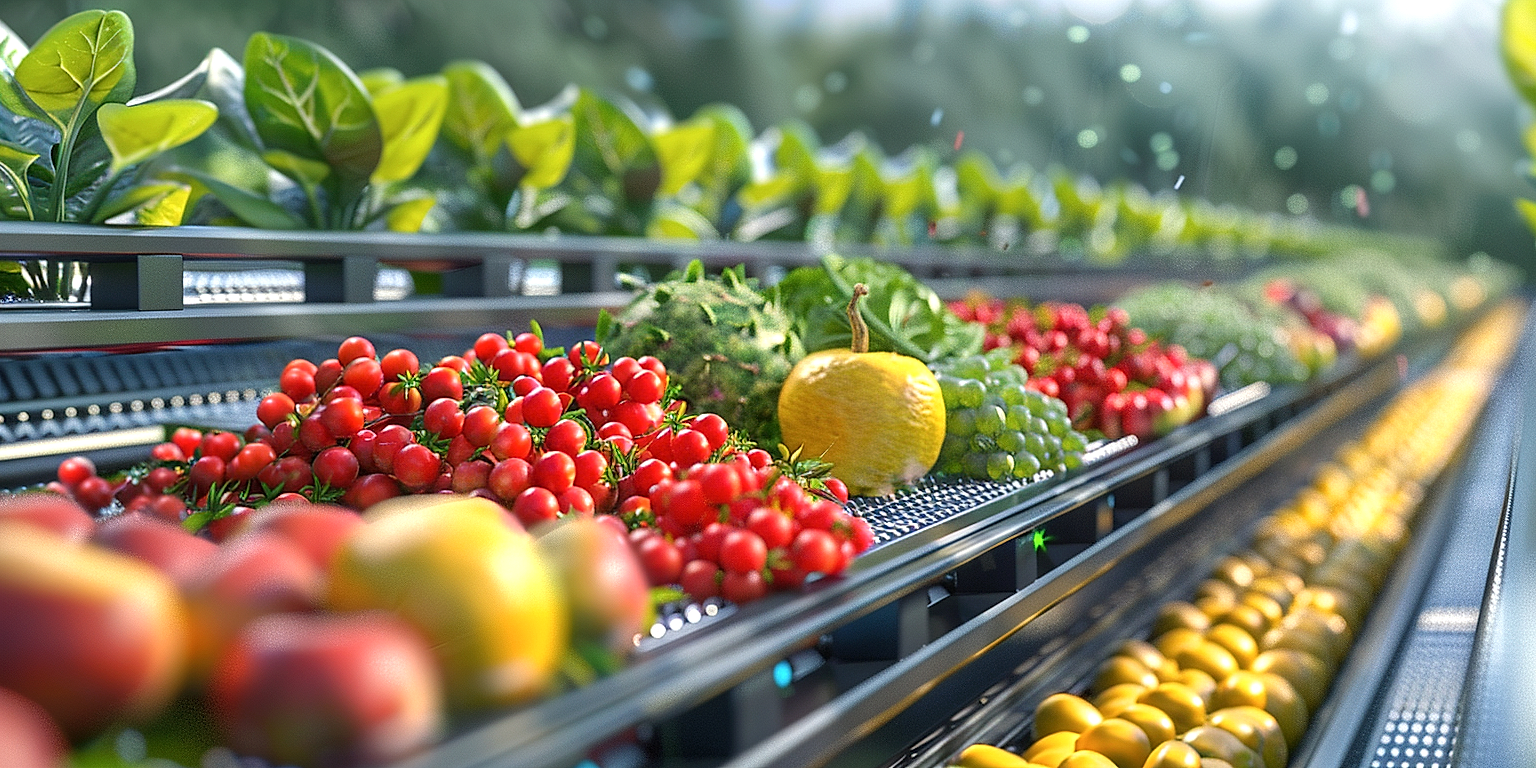As consumers globally continue to influence food industry trends, the produce processing field is experiencing dynamic shifts in its operations.
The rise of health-conscious living, coupled with technological advances and environmental concerns, drastically alters consumer preferences.
Given the fast-paced nature of these evolving trends, businesses are left scrambling to adopt responsive strategies.
Deeper understanding is essential to meeting these changes head on.
This piece delves into the current trends influencing the way produce is processed, highlighting the impact on both businesses and consumers.
The unpacking of these trends will provide valuable insights for stakeholders, ensuring they remain at the forefront of this ever-changing market.
Consumer Demand Trends Shaping Produce Processing
1. Increased Demand for Organic Products
The recent years have witnessed a significant increase in consumer demand for organic products.
This sudden surge in demand can be largely attributed to the growing awareness and concern for personal health and the environment among consumers.
Organic products, particularly those in the food industry, are perceived as safer and healthier options as they contain fewer pesticides and are often fresher due to the absence of preservatives.
Besides, the organic farming practice also provides environmental benefits as it focuses on conservation of water, reduction of soil erosion, and amplification of soil fertility.
With all these factors in mind, consumers are thus willing to pay a premium for organic products in order to ensure their food’s safety and quality.
Notably, there is also a shifting demographic trend to be considered in this surge of organic product demand.
A growing number of millennials, characterized by their eco-conscious consumer behaviors, are contributing significantly to the demand.
Millennials have been noted for their preference for organic and sustainable products which reflect on their personal values.
Additionally, their digital savvy makes them more exposed and receptive to information about the benefits of organic products, hence influencing their purchase decisions.
Moreover, strides in technology and logistics as well as the expansion of delivery services have enabled faster and wider distribution of organic products, thus supplying the demand.
The continued effort of businesses to obtain organic certification has also increased the availability and variety of organic products on the market.
Further, brands are now leveraging on the organic trend by incorporating it into their marketing strategies, indicating its mark on consumer preference and behavior.
Consequently, all these trends shape the operations and processes of the produce industry as it tries to cater to this increasing demand.
Therefore, it becomes crucial for produce processors to understand the growing attraction towards organic and how they can align their strategies to support environmentally friendly and healthy food production.
Indeed, the organic product trend is having a profound impact on the way producers grow, process, and market their items.
2. Preference for Minimally Processed Foods
Over the past few decades, consumer preferences have been gradually shifting towards healthier food choices, and minimally processed foods have been at the epicenter of this shift.
Minimally processed foods refer to those that have undergone minimal levels of processing but have retained most of their natural features and nutrients.
These include fresh produce like fruits, vegetables, legumes, grains, meats, and dairy products that have not undergone significant alterations during the processing stage.
The key driving factor behind this preference is the growing awareness and consciousness among consumers about the health implications of overly processed foods.
Research has shown that consuming overly processed foods can lead to health issues like obesity, heart disease, and diabetes, while minimally processed foods offer numerous health benefits.
Minimally processed foods are often rich in vital nutrients and devoid of artificial ingredients and preservatives, making them a healthier choice for consumers.
Moreover, these foods often have a higher fiber content that promotes digestive health, and they are generally low in unhealthy fats, sodium, and sugars.
This shift in consumer behavior is reshaping the produce processing industry.
Many manufacturers are moving away from excessive food processing techniques and adopting more natural, minimal processing methods in order to meet customer demand.
Techniques like freezing, canning, vacuum-sealing, and drying are used to ensure that the foods retain their nutritional value and taste while also maintaining their shelf life.
This trend is noticeable not just in the fruit and vegetable segment, but across the entire food industry.
From dairy products to meat and poultry, producers are embracing this trend, offering products with shorter ingredient lists and recognizable, natural ingredients.
As consumers continue to prefer minimally processed foods and beverages, manufacturers will need to ensure that their goods comply with these changing trends.
Going forward, the food industry and produce processors need to keep a close eye on these evolving dietary changes and preferences.
Sticking to traditional, heavy processing might not sustain them in the current market scenario driven by a consumer base that is more health-conscious and environmentally aware.
3. Desire for Locally Sourced Produce
The growing consumer desire for locally sourced produce is reshaping the landscape of produce processing.
Rapid urbanization and globalization have largely influenced this shift, with consumers increasingly appreciating the authenticity and freshness that locally sourced groceries bring.
People are now more aware of the environmental implications of their food choices, and as a result, are demanding that businesses prioritize local sourcing to reduce carbon emissions associated with long-distance transportation.
Consumers want to do their part in preserving the environment by choosing locally sourced produce, thus, businesses must adapt accordingly.
In addition to sustainability, consumers value the superior taste and novelty that local products offer.
This preference is likely due to the fact that local produce is often fresher as it does not need to be transported over long distances, which can affect its taste and nutritional value.
Furthermore, supporting local farmers and businesses has become a significant social cause that many consumers wish to support.
Thus, the desire for locally sourced produce helps to foster community development and nurture relationships with local farmers.
Not only does local sourcing feed into the demand for transparency in food sourcing, but it also puts the spotlight back on in-season, traditional, and heirloom produce varieties.
Many consumers are rediscovering the diversity and richness of their local agricultural heritage, an appreciation that industry stakeholders are keen to cultivate.
The produce processing industry, therefore, has been prompted to revisit traditional methods and reconsider their sourcing strategies in order to cater to this demand.
The increasing demand for locally sourced goods is likely to form a key part of the industry’s strategy going forward, whether in terms of product development, marketing or other areas of business operation.
This, of course, depends on local agricultural practices being sustainable and farmers being able to meet the anticipated growth in demand.
Consequently, the drive for local sourcing might incentivize improvements in local agricultural infrastructure and practices, therefore contributing to regional economic development.
This trend towards local sourcing and sustainable agriculture brings to light new opportunities for innovation in the produce processing sector, offering numerous possibilities for product differentiation in a market increasingly characterized by discerning consumers.
4. Spike in demand for plant-based proteins.
The last decade has seen a marked rise in consumer demand for plant-based proteins.
As more information about the benefits of a plant-based diet becomes readily available, consumers are increasingly gravitating towards plant-based protein sources.
This trend is largely driven by the desire to eat healthier and the growing awareness about the impact of meat consumption on the environment.
Numerous research studies have shown that plant-based diets are not only beneficial for health but also for the environment, as they require fewer resources such as water and land, compared to animal-based proteins.
The rising consumer demand has significantly influenced the produce processing industry.
Manufacturers are increasingly incorporating plant-based proteins into their products to cater to the growing consumer demand.
These range from traditional soy-based proteins to newer alternatives like pea protein, lentil protein, and vegetable protein blends.
Moreover, advancements in food technology have made it possible to create plant-based proteins that mimic the taste and texture of animal-based proteins, further fuelling the demand.
Consequently, grocery store shelves are now lined with a wide variety of plant-based protein options, including plant-based burgers, sausages, chicken substitutes, and more.
These innovative products have made it easier for consumers to incorporate plant-based proteins into their diets, thereby driving further demand.
In addition to packaged food products, the demand for unprocessed plant-based proteins such as beans, lentils, quinoa, and nuts has also surged.
This can be attributed to the growing trend of home cooking and the desire for minimally processed foods.
Farmers and produce processors alike are looking for ways to capitalize on this trend, often offering pre-soaked or pre-cooked versions of these products for added convenience.
Despite the challenges posed by inconsistent crop yields and fluctuations in commodity prices, the prospect of high demand for plant-based proteins makes it a promising area for producers and processors.
Therefore, the surge in demand for plant-based proteins demonstrates the consumer’s growing engagement with health and wellness, and their increasing responsible sourcing and purchasing decisions.
5. Growing interest in ethically sourced items.
One of the most significant trends shaping the produce processing industry is the growing interest in ethically sourced items.
This shift in consumer preferences is largely driven by the increasing awareness about the impact of agricultural practices on the environment and on human health.
Many consumers today are willing to pay a premium for products that are ethically sourced, as they believe that this is a way to contribute to a more sustainable and equitable food system.
It is also believed that ethically sourced produce is healthier and of higher quality than conventionally sourced ones.
For them, ethical sourcing is not just about the final product, but also about the entire supply chain involved in getting the product from the farm to their plates.
This can include things like ensuring that farm workers are paid fair wages, reducing the use of harmful pesticides, promoting animal welfare, and minimizing the carbon footprint associated with agriculture.
As a result, many produce processing companies are making efforts to enhance traceability, increase transparency, and implement ethical sourcing principles in their operations.
For instance, they might partner with certified organic farms, implement third-party audits to verify ethical sourcing practices, or launch initiatives aimed at reducing their environmental impact.
The growing interest in ethically sourced items is not just a trend, but an enduring shift in the way consumers perceive and interact with the food system.
This means that it presents both a challenge and an opportunity for produce processing companies to rethink their business models, adapt to these new demands, and work to create a more sustainable and equitable food system.
For companies that are successful in doing so, this trend can translate into an increased market share and higher revenues, as these products often command a price premium in the marketplace.
Moreover, by embracing ethical sourcing principles, companies can build stronger relationships with their customers, differentiate themselves from their competitors, and enhance their reputation in the marketplace.
This is particularly important in an age where information is readily available at people’s fingertips, and where companies are held accountable for their actions like never before.
Overall, the growing interest in ethically sourced items represents a major shift in consumer demand, and is one of the key trends shaping the produce processing industry today.
Companies that are proactive about adapting to this shift stand to gain a competitive advantage and are likely to be seen as leaders in their industry.
6. Surge in demand for gluten-free items.
The growing popularity of gluten-free diets has drastically impacted consumer demands in the produce processing sector.
With more and more people choosing to eat gluten-free, whether due to health reasons such as celiac disease or other gluten sensitivity, or personal preference, the demand for gluten-free products is definitely on the rise.
These consumer requests have compelled the food industry to make considerable adjustments, particularly in the production, labeling, and marketing of gluten-free items.
Indeed, producers are now having to go an extra mile in the meticulous selection of raw materials, in addition to setting up dedicated production lines solely for gluten-free items, which is driving up costs and influencing the market dynamics drastically.
While previously, gluten-free items were largely limited to specialty health food stores, they have now spread to mainstream supermarkets and restaurants.
The gluten-free trend has also made its way onto e-commerce portals, where dedicated websites and sections now cater to this growing segment of health-conscious and allergy-sensitive consumers.
Moreover, this trend is also significantly affecting the agricultural sector, pushing farmers to cultivate more gluten-free grains such as quinoa and millet.
As gluten-free diets continue to gain popularity, more and more food producers are seeking certification for their products, with glute-free certification becoming an increasingly common badge on food packaging.
Accordingly, the industry is making sizeable efforts to improve the taste and texture of gluten-free alternatives, which have traditionally been areas of customer dissatisfaction.
This drive towards quality is supported by innovative processing technologies and new ingredients, designed to bring gluten-free products on par with their traditional counterparts.
There is also a growing interest in using natural and clean ingredients in gluten-free products, in line with the broader trend towards health and wellness in the food industry.
Interestingly, the demand for gluten-free items is no longer confined to food but has also extended to cosmetics and personal care products, broadening the scope of the market tremendously.
This increasing consumer demand for gluten-free items is anticipated to continue in the foreseeable future, transforming the way producers approach food processing.
However, it will also pose significant challenges, such as regulatory hurdles and the serious risk of cross-contamination, which will need to be navigated carefully to maintain consumer trust.
Nevertheless, given the clear market signals, the surge in demand for gluten-free items is set to play a major role in shaping the future of produce processing globally.
7. Rising Preference for Pesticide-Free Produce
Over the past few years, consumer preferences have steadily shifted towards pesticide-free produce.
People are becoming highly conscious about what they consume and where their food comes from.
This increased consciousness has led to a greater demand for fresh produce that is free from harmful chemicals and pesticides.
Studies have shown that consumers are now willing to pay a slightly higher price for pesticide-free produce, seeing it as an investment in their health and wellbeing.
The fear of the potential health risks associated with pesticide residue on fruits and vegetables is a significant driving factor behind this trend.
Pesticides have been linked to a range of health issues, including certain types of cancer, neurological disorders, hormonal disruption, and developmental problems among others.
This awareness is resulting in a marked preference for pesticide-free fruits and vegetables even if they come at a higher cost.
With pesticide-free produce, consumers feel more at ease knowing they are minimizing the risk to their health and that of their families.
This growing demand for pesticide-free produce is also shaping the way produce is being grown and processed.
There is now a greater emphasis on farming practices that do not rely on synthetic pesticides.
Producers are turning to alternative methods such as biopesticides, organic farming practices, and integrated pest management strategies to reduce the use of harmful chemicals.
In response to the demand, retailers and produce processing companies are also changing their sourcing strategies, focusing more on suppliers who can provide pesticide-free produce.
They are also investing in different techniques for processing the produce to ensure the absence of any pesticide residue, which adds to the cost but also increases their market appeal.
The trend is not just confined to fresh produce but is also being seen in processed foods like juices, jams, and ready-to-eat meals made from fruits and vegetables.
Manufacturers of these products are now actively advertising that their products are made from pesticide-free produce in response to consumer demand.
The rising preference for pesticide-free produce is a clear trend in consumer behaviour and is likely to continue influencing the produce processing industry in the future.
The Bottom Line
It is evidently clear that consumer preferences are shifting towards healthier and more ethical options when sourcing their food.
The burgeoning demand for organic, minimally processed, and locally sourced produce demonstrates a heightened consciousness about dietary choices’ impact on personal health and the environment.
Moreover, the growing interest in ethically sourced items, plant-based proteins, and gluten-free items reflect a more holistic approach to wellness, incorporating both dietary and lifestyle changes.
As people have become increasingly aware of harmful farming practices, there is a rising demand for pesticide-free produce.
This paradigm shift in consumer preferences indicates a promising trajectory towards a sustainable and health-conscious food industry.




